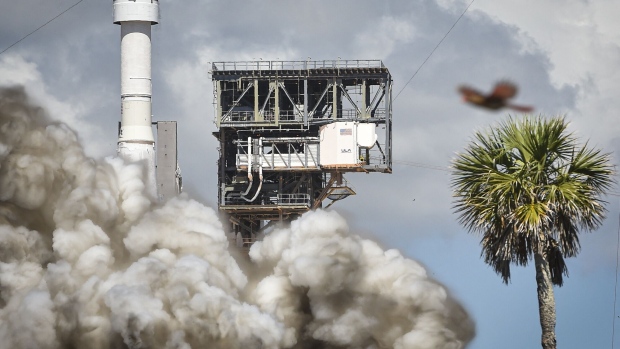Jun 18, 2024
Boeing’s Crewed Starliner Mission Delays Return From Space
, Bloomberg News

(Bloomberg) -- Boeing Co. and NASA pushed back by four days the return home of two astronauts from the International Space Station, the latest disruption for a program that has been beset by delays.
The mission using Boeing’s CST-100 Starliner capsule will now happen on June 26, instead of the previously scheduled June 22 target, NASA told a press briefing on Tuesday.
Boeing’s space taxi docked with the orbiting laboratory on June 6 as part of a critical flight test for NASA. Initially, the crew was supposed to stay on board the station for about a week.
Boeing Capsule Delivers NASA Astronauts to Space Station (2)
NASA will use the data from the flight and return mission to determine if Starliner is ready to regularly transport the agency’s astronauts to and from the ISS. If approved, Boeing will share that responsibility with NASA’s other commercial partner, Elon Musk’s SpaceX, which since 2020 has been taking crews to the space station on its Crew Dragon.
Starliner has suffered numerous delays and setbacks that pushed this test run back by seven years. It comes at a time when Boeing’s plane manufacturing procedures have been under sharp scrutiny since the start of this year, when a door flew off of a nearly new 737 Max 9 mid-flight.
After their stay, NASA astronauts Sunita “Suni” Williams and Barry “Butch” Wilmore will load back into Starliner for the journey home, another critical test the spacecraft needs to ace for this mission. Starliner is meant to keep the astronauts safe while plunging through Earth’s atmosphere. It will ultimately land in the southwestern US underneath parachutes.
Boeing was forced to perform two uncrewed test flights of Starliner after its first mission in 2019 failed to reach the ISS as planned.
The company has also dealt with corroded valves, parachute issues, flammable tape and other problems that pushed back the first crewed test flight. A last-minute helium leak delayed this launch date by roughly a month. That leak and others that emerged during flight have persisted and continue to be evaluated by NASA.
NASA and Boeing have been using the extra time to better understand a series of glitches that Starliner has experienced since launching to space. Engineers have now detected as many as five separate helium leaks on the Starliner spacecraft.
However, NASA and Boeing believe that the leaks shouldn’t be an issue for Starliner’s return flight home. The engineering teams said they are confident that if Starliner needed to return home now for some kind of emergency, it could safely bring the crew home.
“We wouldn’t say Starliner is safe to bring a crew home in an emergency if we didn’t feel confident in the vehicle’s capability,” Steve Stich, manager of the Commercial Crew Program at NASA, said.
Additionally, five of Starliner’s thrusters, mini-engines the capsule uses to maneuver through space, failed. Boeing and NASA were able to bring four of the failed thrusters back on line.
Over the weekend, NASA and Boeing fired a number of the thrusters to see how they behaved and said they are comfortable with how they performed.
As for the helium leaks, NASA and Boeing still aren’t sure about the root cause. The goal is to use the additional time in space to gather more data to determine the origin of the leaks.
“It’s the question that our engineers are asking of themselves,” Mark Nappi, a Boeing program manager, said during the press conference.
(Updates with details on thruster problems, leaks from ninth paragraph.)
©2024 Bloomberg L.P.


